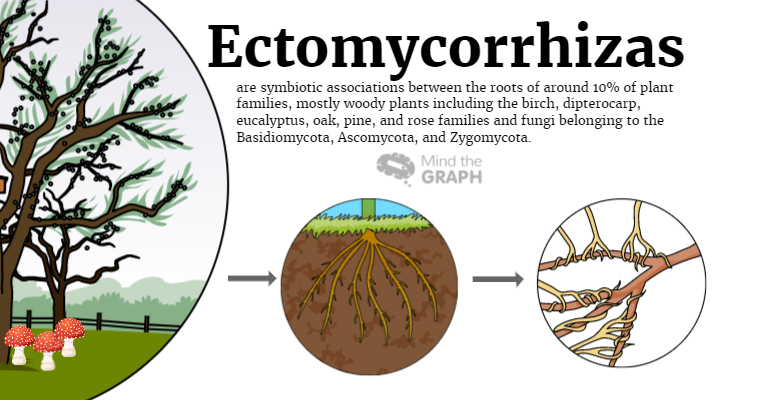We can see the immensity of rainforests looking at pictures of the tree tops take by drones. But to sustain all this life there is an underground web, that we don’t see and many people don’t know about. Yes, I am talking about mycorrhizal fungi. Even for scientists these aspects of life remains mostly unknown.
In 2019 researchers just mapped for the first time the global distribution of three major groups of these microbes. The authors “generate a spatially explicit global map of the symbiotic status of forests, using a database of over 1.1 million forest inventory plots that collectively contain over 28,000 tree species”.
The two types are differentiated by the fact that the hyphae of ectomycorrhizal fungi do not penetrate individual cells within the root, while the hyphae of endomycorrhizal fungi penetrate the cell wall and invaginate the cell membrane.
Endomycorrhizas dominate in aseasonal, warm rainforests. The symbiosis between plants and microorganisms are also very important to plants in seasonally cold and dry climates. It is the predominant form of symbiosis at high latitudes and elevation.
The giant Armillaria solidipes (honey mushroom) is considered the largest organism on Earth, spreading across more than 2,000 acres of underground soil in eastern Oregon; it is estimated to be at least 2,400 years old.

Don’t get the wrong ideia. The Fungi are not passive accessories to plants. They are powerful and dynamic.
They can get the nutrients that plants needed from the soil. It means phosphorus especially, but also nitrogen. Moreover, there is evidence that microbes help plants to access water from soil as well. So with this huge importance for life maintenance, we need to know more about them that we know right now. However, microbes are, of course, microscopic living under the soil while there is millions of colorful and vibrant plants and animals to see.
Also, there aren’t an easy subject to study: some species don’t grown in the lab. Also, the network break easily when we try extract from the soil. Some of them doesn’t have ‘cells’, their nuclei with DNA are shared between cells, creating networks that can be kilometers long. You can agree with me that there are a lot of excuses to our lack of knowledge about mycorrhizal fungi.
But around 80% of today’s land plants form partnerships with fungi; still other plants partner with bacterias.
And, you know, nobody said that be a scientist would be easy.
A new paper published in June brings new light to the question. Matthew Whiteside and his colleagues make it possible to visualize the invisible. They developed a quantum-dot nutrient-tracking technique that allowed us to track the trade of fluorescently labeled phosphorus in arguably the world’s most widespread trade partnership: the mutualism between arbuscular mycorrhizal fungi and land plants. By tagging phosphorus with highly fluorescent nanoparticles of different colors, we could follow the movement of resources from their points of origin, across a fungus, and into the host root.
The fungus mobilizes and collects phosphorus from the soil and trades this commodity with its host plants for carbon in a market-like exchange. The authors wanted to see how the the fungi respond to varying levels of resource inequality. This study has evidences that fungi aren’t just passive nutrient traders, but information processors.
The Quanta Magazine published a complete and interesting article about it. The author is Gabriel Popkin. Let me give you a spoiler of the article: “what really distinguishes the fungal world is its diversity and complexity. A spoonful of soil contains more microbial individuals than there are humans on Earth. “It’s the most species-dense habitat we have,” said Edith Hammer, a soil ecologist at Lund University in Sweden. A single plant might be swapping molecules with dozens of fungi — each of which might in turn be canoodling with an equal number of plants. It’s a promiscuous party down there.”
In the awesome video below you can watch materials streaming through living fungal hyphae. The direction of the streaming changes because the fungus redirects the flow of nutrients, seemingly strategically, in response to environmental conditions. The video is a courtesy of Courtesy of Toby Kiers to Quanta Magazine Channel:
Knowing the importance of the subject, we create several illustrations of fungi. So if you want to explain it to your students, colleagues or friends, you can use them!
So, let’s improve communication in science together! Are you ready to give a try?

Subscribe to our newsletter
Exclusive high quality content about effective visual
communication in science.






